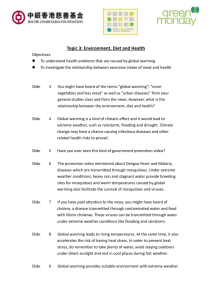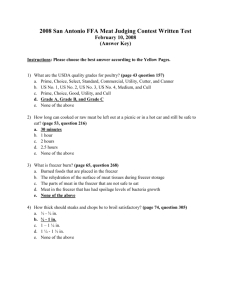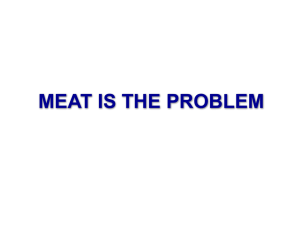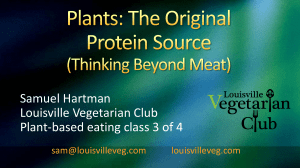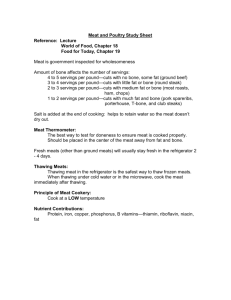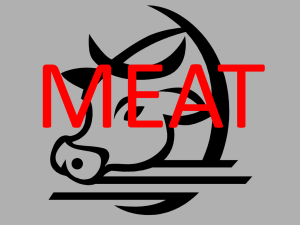View/Open
advertisement
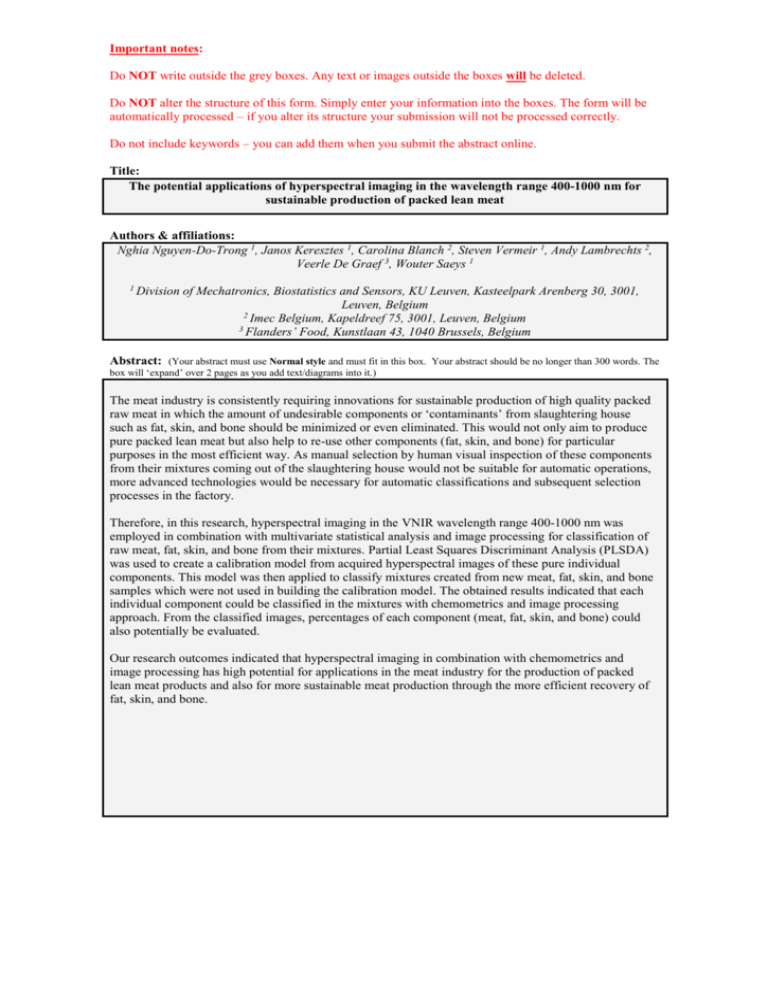
Important notes: Do NOT write outside the grey boxes. Any text or images outside the boxes will be deleted. Do NOT alter the structure of this form. Simply enter your information into the boxes. The form will be automatically processed – if you alter its structure your submission will not be processed correctly. Do not include keywords – you can add them when you submit the abstract online. Title: The potential applications of hyperspectral imaging in the wavelength range 400-1000 nm for sustainable production of packed lean meat Authors & affiliations: Nghia Nguyen-Do-Trong 1, Janos Keresztes 1, Carolina Blanch 2, Steven Vermeir 1, Andy Lambrechts 2, Veerle De Graef 3, Wouter Saeys 1 1 Division of Mechatronics, Biostatistics and Sensors, KU Leuven, Kasteelpark Arenberg 30, 3001, Leuven, Belgium 2 Imec Belgium, Kapeldreef 75, 3001, Leuven, Belgium 3 Flanders’ Food, Kunstlaan 43, 1040 Brussels, Belgium Abstract: (Your abstract must use Normal style and must fit in this box. Your abstract should be no longer than 300 words. The box will ‘expand’ over 2 pages as you add text/diagrams into it.) The meat industry is consistently requiring innovations for sustainable production of high quality packed raw meat in which the amount of undesirable components or ‘contaminants’ from slaughtering house such as fat, skin, and bone should be minimized or even eliminated. This would not only aim to produce pure packed lean meat but also help to re-use other components (fat, skin, and bone) for particular purposes in the most efficient way. As manual selection by human visual inspection of these components from their mixtures coming out of the slaughtering house would not be suitable for automatic operations, more advanced technologies would be necessary for automatic classifications and subsequent selection processes in the factory. Therefore, in this research, hyperspectral imaging in the VNIR wavelength range 400-1000 nm was employed in combination with multivariate statistical analysis and image processing for classification of raw meat, fat, skin, and bone from their mixtures. Partial Least Squares Discriminant Analysis (PLSDA) was used to create a calibration model from acquired hyperspectral images of these pure individual components. This model was then applied to classify mixtures created from new meat, fat, skin, and bone samples which were not used in building the calibration model. The obtained results indicated that each individual component could be classified in the mixtures with chemometrics and image processing approach. From the classified images, percentages of each component (meat, fat, skin, and bone) could also potentially be evaluated. Our research outcomes indicated that hyperspectral imaging in combination with chemometrics and image processing has high potential for applications in the meat industry for the production of packed lean meat products and also for more sustainable meat production through the more efficient recovery of fat, skin, and bone.


